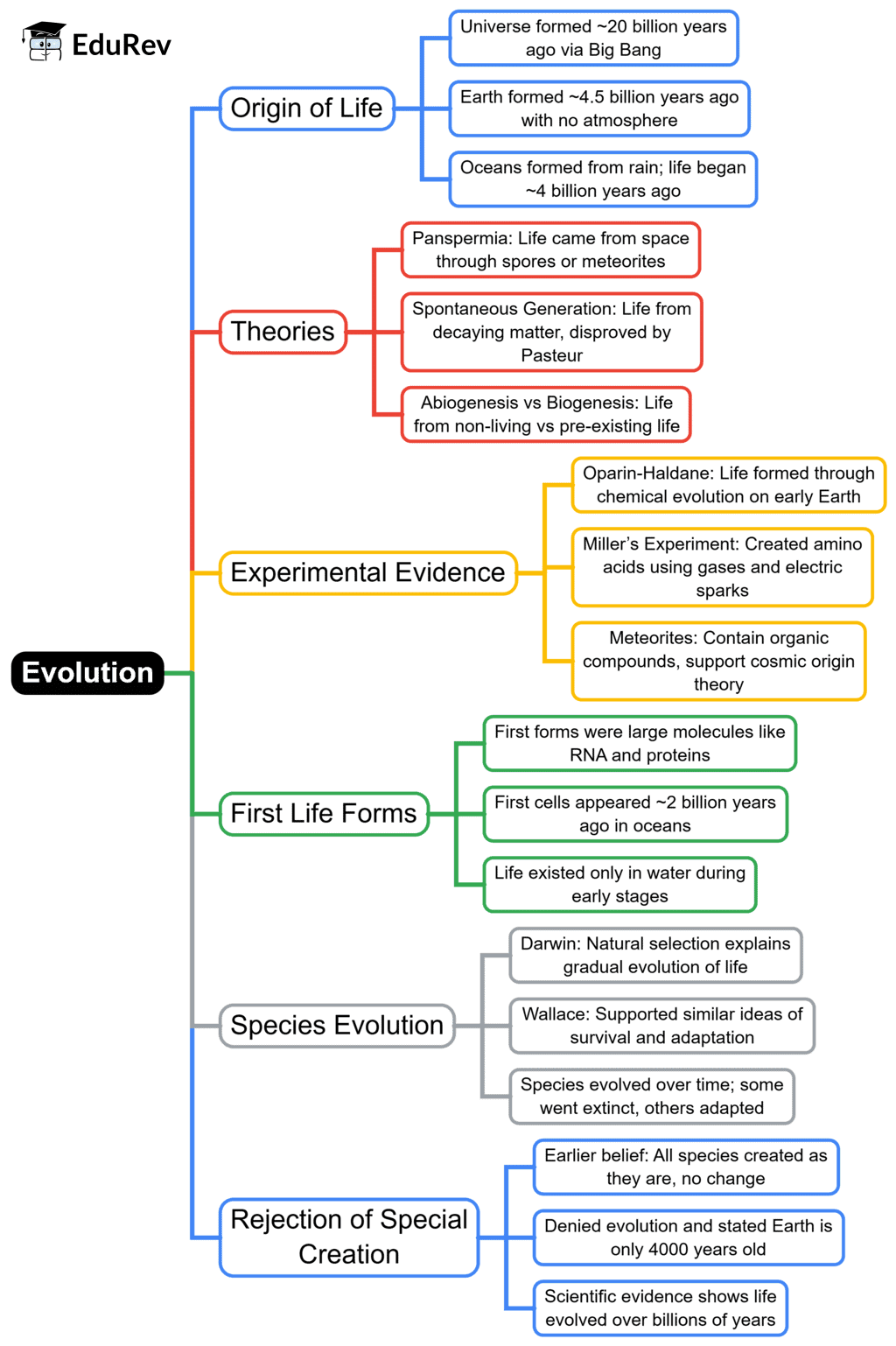NEET Exam > NEET Notes > Biology Class 12 > Minmap: Evolution
Minmap: Evolution | Biology Class 12 - NEET PDF Download

The document Minmap: Evolution | Biology Class 12 - NEET is a part of the NEET Course Biology Class 12.
All you need of NEET at this link: NEET
|
59 videos|290 docs|168 tests
|
FAQs on Minmap: Evolution - Biology Class 12 - NEET
| 1. What is the theory of evolution and why is it important in biology? |  |
Ans. The theory of evolution explains how species change over time through processes such as natural selection, mutation, and genetic drift. It is important in biology because it provides a framework for understanding the diversity of life on Earth, how organisms adapt to their environments, and the relationships between different species.
| 2. What evidence supports the theory of evolution? |  |
Ans. Evidence supporting the theory of evolution includes fossil records, comparative anatomy, molecular biology, and biogeography. Fossils show transitional forms between species, comparative anatomy reveals similarities in structure among different organisms, molecular biology highlights genetic similarities, and biogeography illustrates how species are distributed across the planet.
| 3. How does natural selection work in the process of evolution? |  |
Ans. Natural selection works by favoring individuals with traits that enhance their survival and reproductive success in a given environment. Over time, these advantageous traits become more common in the population, leading to evolutionary changes. This process involves variation in traits, competition for resources, and the survival of the fittest.
| 4. What role do mutations play in evolution? |  |
Ans. Mutations are changes in the DNA sequence of an organism and serve as a primary source of genetic variation. They can introduce new traits that may be beneficial, neutral, or harmful. Beneficial mutations may be selected for through natural selection, contributing to evolutionary change in populations over time.
| 5. How do scientists use phylogenetic trees to study evolution? |  |
Ans. Scientists use phylogenetic trees to illustrate the evolutionary relationships among different species. These trees are constructed using genetic data, morphological traits, and fossil evidence. They help researchers understand how species are related, trace their evolutionary history, and identify common ancestors.
Related Searches
















